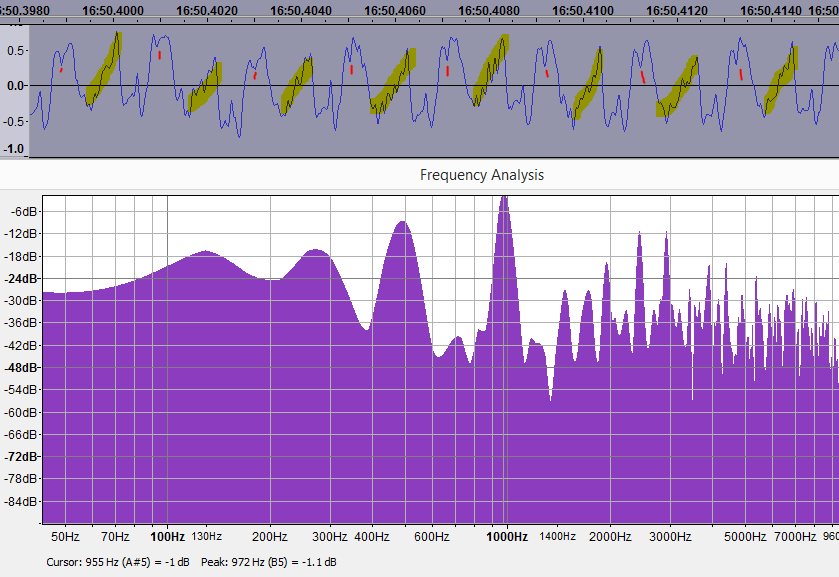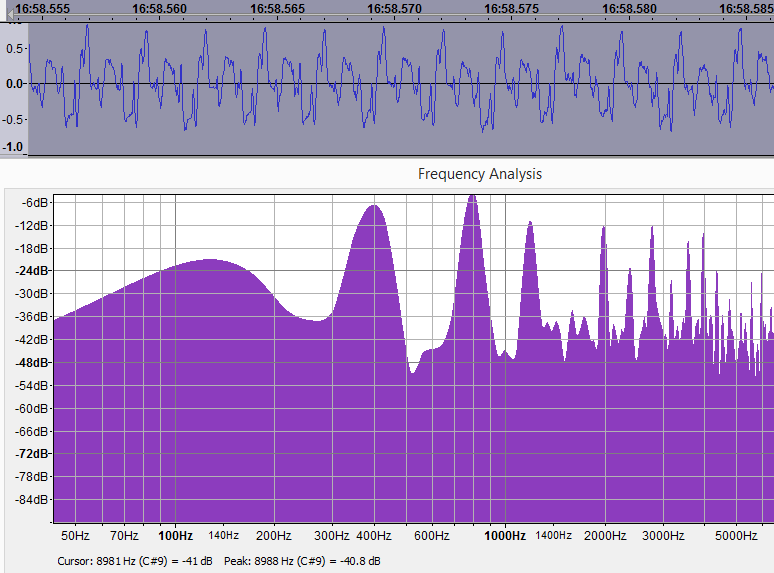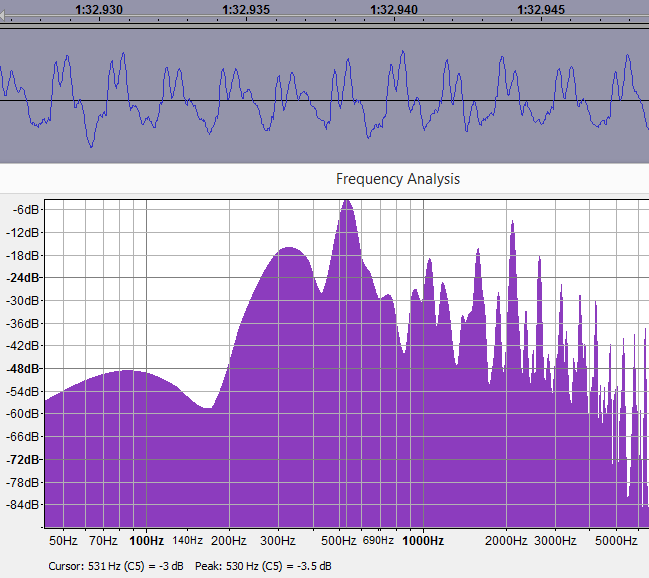Recording
In Part 1 and Part 2 of this series, I introduced DeAnna's tone and vocal range. The uniqueness of her voice makes it hard to categorize, and since she does not follow a cookie-cutter singing style, you will find lots of subjective opinions -- probably a differing opinion from every listener, but mostly positive from the musical connoisseurs. In this article in the series, I wanted to give an example where the audio recording of DeAnna's voice did her no favors, and you can understand how it came about. This is not the most pleasant task but it really is a learning experience for me. So consider this article a temporary detour.The recording that I will analyze is the WLYU radio session that DeAnna did last within the last month, where she and Andy from the Tiger Creek Band performed an impromptu duet of Whiskey Lullaby originally performed by Allison Krauss and Brad Paisley.
To set the stage, you have to understand that commercial radio stations exist to retain the ears of the listeners, and so they tend to be on the manic side, with the intention that the radio audience doesn't drift off or fall asleep. In doing that they will resort to all sorts of audio tricks. One of these tricks is to keep the microphone levels boosted to near maximum levels. This has the effect of making the radio sound louder if it is playing in the background. Not hard to understand, as they want the listeners to pay attention for when the commercials come on.
With that said, it appears that DeAnna's microphone levels were set much too high and that she was "pegging the needle" on the recording, with the unfortunate effect that her vocals coming off as sounding distorted. Most people are able to pick up on this, especially as DeAnna was trying to emulate the delicate vocals of Allison Krauss. As a contrast, Andy didn't have the issue as his microphone and guitar were miked with the proper levels
What exactly does this distortion do to the audio quality of the voice? As we described in Part 1, overtone singing adds harmonics to the voice and can establish a singer's unique tone. However, the harmonics have to be in the right proportion and phase, otherwise the overtones will end up sounding unpleasant. And there is little subjectivity to this, as very few people enjoy the sound of fingernails scratching across a blackboard.
So when a recording is distorted by being pegged or saturated, what actually happens is that overtone harmonics are artificially added to the sound. As it happens, these harmonics end up being in such a proportion and phase that end up sounding extremely unpleasant. This is a short passage that sounds somewhat harsh to the ears because of the microphone distortion:
If we concentrate on how DeAnna sings the word "bottle", it is very apparent:
Here are two spectra located in that snippet. The first signal with highlights in yellow, show traces of a "sawtooth" wave, which is bad news in a recording. And the red marks show perhaps signs of clipping that add even more high frequency shrillness. The purple below shows a fundamental at right below 500 Hz and many very strong harmonics above this.

On another part, the signal is very spiky with harmonics going very high, up to 4000 Hz, which will add a "hiss" sound to a singer's voice.

You can tell that it doesn't sound right when you compare to an overtone that is natural. From Part 1, this is the overtone of DeAnna singing the word "dream"
And this is the spectrum, which appears less harsh and jagged, with a more rounded signal shape. The overtone harmonics are still there but they are the right proportion to make her tone sound unique, and definitely more soothing to the ears than the distorted clip.

To make matters worse, adding distortion to a unique tone multiplies the dissonance, as each of the natural harmonics can get distorted. That explains why this recording of Whiskey Lullaby didn't come across very well. Too bad that the radio guys at the station didn't notice this at the time because that duet likely sounded way better in person than it did over the broadcast waves. It's very hard if not impossible to fix a recording mistake like this after the fact.
We will be back to the analysis of the beauty of DeAnna's voice in an upcoming installment, but if you are interested in out-of-the-ordinary vocal stylings, check out Dan Bodah's Vocal Fry radio program here
@vocalfrier fun stuff, luv analyzing the singing voice https://t.co/i2mkvs5uxc https://t.co/uwZ3CbOpky
— De Intern (@indiefolkfan) October 30, 2015More analysis to come of, of course, so stay tuned ...





Comments powered by CComment